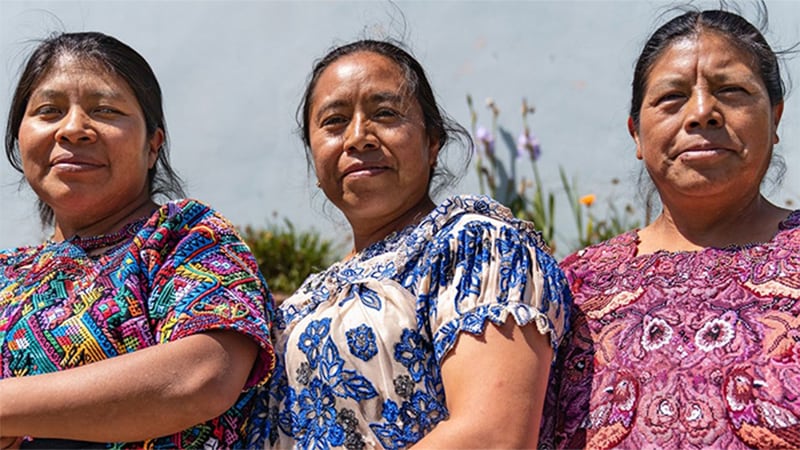At a glance
When sharing information on health disparities, consider the positive and negative impacts of your messaging. Emphasize the social drivers/determinants of health (i.e., non-medical factors in the places where people live, learn, work, and play that affect quality of life and a wide range of health outcomes).

Maintain a foundational respect for human rights
Respect and protection of human rights helps build trusting relationships between public health practitioners and the public. A human rights perspective can also lead to a more effective and conscientious public health workforce and improve program effectiveness.
Health is interdependent and interrelated with other human rights, such as the rights to life, freedom from discrimination, recognition everywhere as a person, and a standard of living adequate for health and well-being.
Social determinants of health
Social drivers or determinants can include non-medical factors in the places where people live, learn, work, and play that affect quality of life and a wide range of health outcomes.
Health equity is a process of removing structural patterns or economic and social drivers of health that result in health disparities.
It is especially important to emphasize social drivers or determinants when presenting racial, ethnic, gender, occupation, education, spatial, and economic income/wealth data.
Globally, social drivers are incredibly diverse and nuanced.
Respectful communication
Whenever possible, avoid generalization, homogenization, and stereotypes that can be condescending, derogatory, or insulting to the audience. Try to specify the population, locality, country(ies), or region(s).
- Be cautious not to overlook inclusivity or respect for the sake of brevity.
- Countries and populations are too diverse and complex to be categorized only into dichotomies such as Global North vs. South, high-income vs. low-income, or resource-rich vs. resource-poor settings.
- Be cautious when comparing public health challenges in one country or region to the challenges experienced in another country or region. Some strategies and lessons-learned may apply across cultures and geographies, but it is critical to always consider the local context and unique experiences in each locality.
- Avoid outdated, inaccurate, and/or demeaning terminology.
- Avoid exoticizing people, cultures, personal attributes, practices, environments, experiences, and illnesses/diseases. Exoticizing people means they are excessively portrayed as unusual, romantic, or glamorous.
Person-first language
Person-first language can help emphasize a person's humanity and avoid sole focus on personal challenges.
- For example, use 'people with HIV' or 'people diagnosed with HIV' instead of 'HIV-positive people'; or 'people who inject drugs' instead of 'drug-users'; or 'people with diverse abilities' or 'people living with disability' instead of 'the disabled'.
However, while person-first language can be a default strategy, also ask people how they would like to be addressed. Be nimble with word choice since opinions on preferred descriptors can vary between individual members or sub-groups of a population.
Keep in mind
Conversational norms
Learn about a culture's conversational norms, which will help to respectfully build relationships and promote trust when engaging with community members and partners.
For example, in some cultures it is polite to ask about a person's family at the beginning of the conversation and offensive to not ask about family. On the other hand, it can be considered immaterial or impolite in other cultures to inquire about people's personal lives.
Also learn about behavioral taboos and norms when engaging with local partners and community members. For example, in some cultures it is offensive to point bare feet at others or maintain prolonged eye contact.
Cross-lingual grammar
In languages that have formal and informal tenses, pronouns, or terms, ensure that terms of address are appropriate to the situation and person. Ask local partners, contacts, and staff for assistance.
For example, in French and Spanish, there is a difference in formality of the pronouns 'tu/tú' (informal) and 'vous/usted' (formal), depending on the situation and person.
Be credible
Share enough information to keep the audience interested and engaged in the content, while strictly maintaining the privacy and respecting the dignity of any person or community in a story, blog, graphic, presentation, report, discussion, or meeting.
Avoid the deficit perspective
- Viewing people as 'empty containers to be filled,' passive recipients, or people without lives, ideas, thoughts, voices, expertise, or resources to contribute.
- Maintaining a focus on what a person/group does not understand or does not do, what a person's/group's situation lacks, and what it seems the surrounding community cannot provide.
- Blaming the individual/population by not acknowledging the underlying conditions and systemic factors that influence health behaviors, attitudes, and outcomes.
- Limiting the focus only on negative results, outcomes, examples, or depictions.
Instead of communicating from a deficit perspective, incorporate strengths-based (or assets-based) approaches and portray global public health issues in an authentic, contextualized, and respectful way that presents a balanced view of public health issues in the broader context of underlying drivers of health, including both the negative and positive aspects. For example, portray a holistic view of the challenges, impact, successes, failures, unknowns, opportunities, and next steps.
- Involve the community to co-define strengths and challenges and co-design strategies. Ask community members what they believe the community's strengths are and how those strengths help them face challenges.
- A strengths-based approach to communication emphasizes what is working, how existing resources can be or are leveraged, and foster local ownership of strategies and initiatives.
